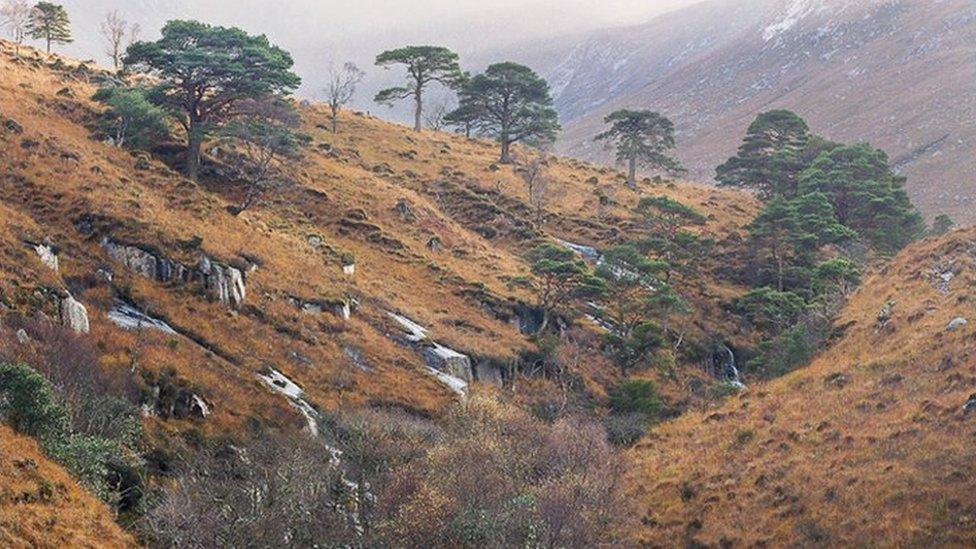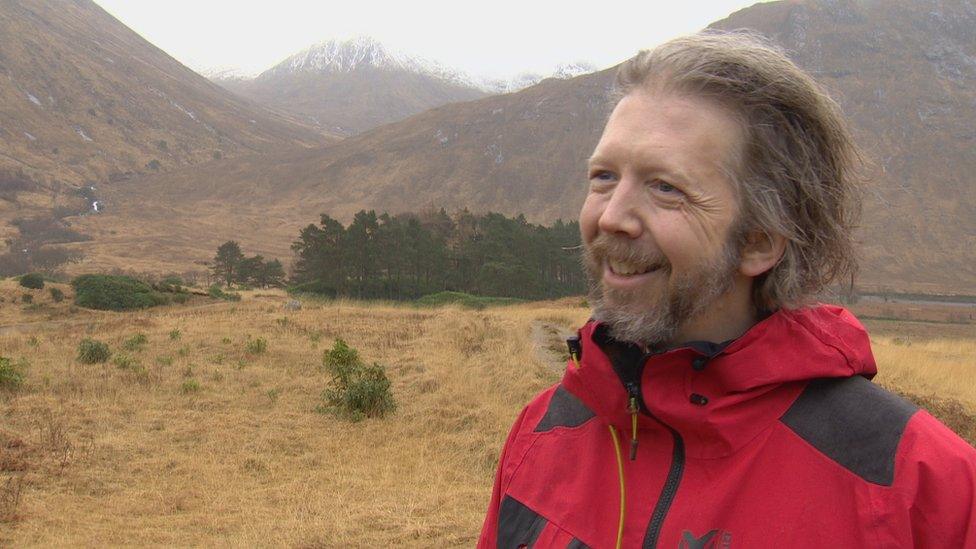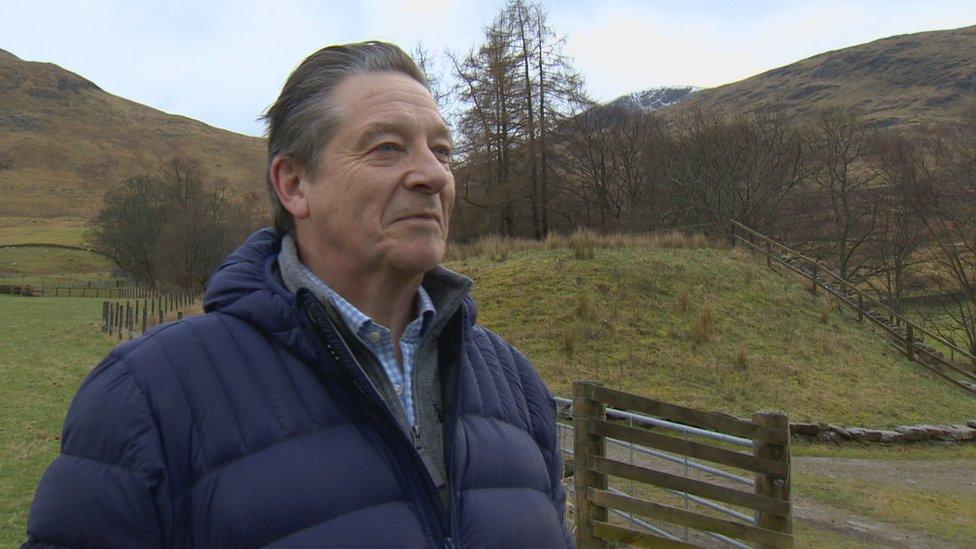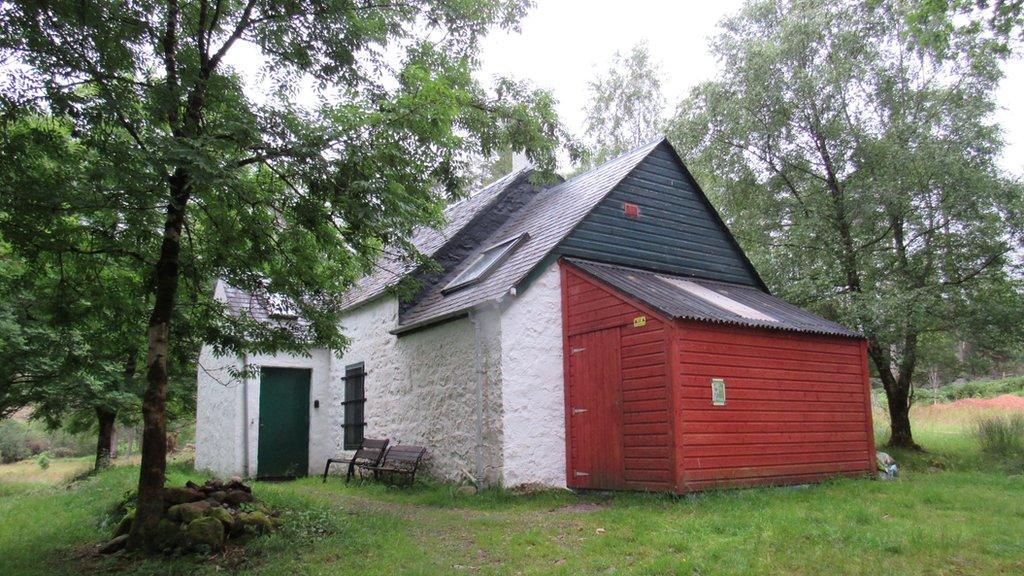Row over hydro projects in 'Skyfall glen'
- Published
- comments

Scenes for the Bond movie Skyfall were filmed in Glen Etive and wider Glen Coe area
Councillors are to review proposals for three small-scale hydro-electric schemes in a Highland glen used as a location for James Bond film Skyfall.
The three projects in Glen Etive, near Glen Coe, are among seven that were approved by members of a Highland Council planning committee last month.
Now one councillor has secured enough support to have the plans reviewed on 20 March.
The three proposed schemes are opposed by a campaign, Save Glen Etive.
Mountaineering Scotland, a body representing the interests of hillwalkers, climbers and skiers, also opposes the three hydro projects.
The developer Dickins Hydro said it appreciated the glen was a special area and would do everything in its power to reduce any impact on the environment.
Glencoe and Glen Etive Community Council supports the overall hydro project, which could produce enough electricity for up to 8,000 properties and raise community benefit funding.

Concerns have been raised about the impact the renewable energy projects would have on Glen Etive
Local councillor Andrew Baxter said that it was only right that the projects planned for a sensitive environment were scrutinised by the full council.
Glen Etive, near Glen Coe, is a National Scenic Area, and a Wild Land Area.
The the area is well-known to film fans as a location for 2012's James Bond movie Skyfall.
Scenes for Skyfall, which starred Daniel Craig as secret agent 007, were filmed in Glen Etive and the wider Glen Coe area.

Landscaoe photographer Tim Parkin supports those opposed to the three projects
Mountaineering Scotland said constructing the hydro power schemes on the rivers and burns in the glen would involve road and bridge building, use of cement and the laying of power cables.
In January its chief executive, Stuart Younie, urged Highland Council to look at the "whole picture of development" in the glen rather than treating each application in isolation.
Landscape photographer Tim Parkin, who support opponents of the plans, said allowing the projects to go ahead would set a precedent.
He said: "We don't want to see this as the thin edge of the wedge. If we say it is OK here, is it then OK in Glen Nevis and other areas? Next will we see developments on Rannoch Moor?
"We want to see renewables, but is it the right place for them? Is there a plan to put things in the right place?"

Alasdair Sutherland said the projects would result in community benefits
Alasdair Sutherland, chairman of Glencoe and Glen Etive Community Council, said the schemes would generate £17,000 in community benefit every year for the local area.
He said: "The community is very receptive to that for all sorts of reasons.
"There's a single-track road that doesn't have enough passing places, we have a litter problem here and there are no public toilets.
"We think that the lives of the people of Glencoe and Glen Etive could be improved."
William Dickins, of Dickins Hydro, said the glen offered ideal conditions for small-scale hydro schemes, including high rainfall and the topography of the area.
He said: "We have spent a lot of time talking to the local community and had specialists look at the whole environment.
"But I understand that it is a very pretty and attractive area and a very special area.
"I can assure you we will do everything we are able to to ensure that at the end of the day everything is restored to look the same as it did before."

William Dickins said specialists had looked at the environment involved
- Published9 January 2019

- Published19 July 2018

- Published10 March 2017
